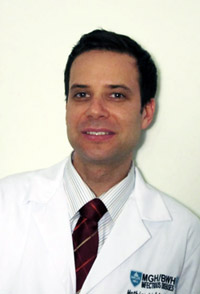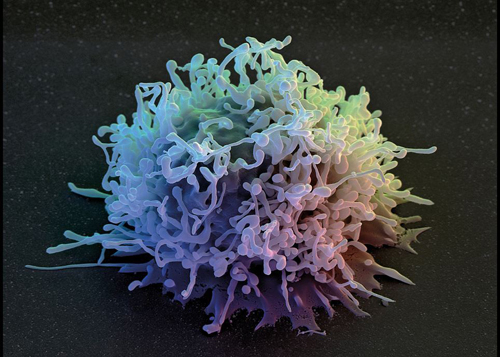 Dr. Mathias LichterfeldMost animal and test tube models for elimination of latent HIV infection—the major impediment to a cure—suggest that a pharmacologic approach alone will not be sufficient. An HIV-positive person’s immune system must be stimulated to play an active role in efforts to eliminate T cells harboring dormant virus. Writing in the October issue of the Journal of Virology, amfAR-funded scientists Drs. Mathias Lichterfeld of Massachusetts General Hospital (MGH); Lars Østergaard and Ole Søgaard of Aarhus University, Demark; and Sarah Palmer of the University of Sydney, Australia; along with associates from the Ragon Institute of MGH, MIT, and Harvard, and the Frederick National Laboratory for Cancer Research; provide new insights into how this might be accomplished.
Dr. Mathias LichterfeldMost animal and test tube models for elimination of latent HIV infection—the major impediment to a cure—suggest that a pharmacologic approach alone will not be sufficient. An HIV-positive person’s immune system must be stimulated to play an active role in efforts to eliminate T cells harboring dormant virus. Writing in the October issue of the Journal of Virology, amfAR-funded scientists Drs. Mathias Lichterfeld of Massachusetts General Hospital (MGH); Lars Østergaard and Ole Søgaard of Aarhus University, Demark; and Sarah Palmer of the University of Sydney, Australia; along with associates from the Ragon Institute of MGH, MIT, and Harvard, and the Frederick National Laboratory for Cancer Research; provide new insights into how this might be accomplished.
The international team of researchers analyzed immune factors associated with changes in levels of proviral HIV DNA—one measure of HIV persistence—in 15 HIV-positive individuals receiving antiretroviral therapy in addition to panobinostat, a drug capable of activating latent virus. Surprisingly, the levels and potency of a key component of anti-HIV immunity, the CD8+ killer T cell, bore no relationship to changes in HIV DNA during panobinostat treatment. But changes in a critical component of our innate immune system, the natural killer (NK) cell, did relate.

A natural killer cell (Photo: David Scharf)
The proportion of total NK cells and one of its major subsets was inversely linked to HIV DNA levels throughout the course of treatment. And a second NK cell subset was specifically altered upon introduction of panobinostat. In addition, other parts of the innate immune system, including plasmacytoid dendritic cells and interferon-stimulated gene activity, also appeared to be linked to the decline in HIV DNA levels during panobinostat treatment.
According to Lichterfeld and colleagues, their results suggest that “innate immune activity may play an important role in reducing the latent reservoir” and is a promising target for future combined immune/drug approaches to curing HIV.
Dr. Laurence is amfAR’s senior scientific consultant.